My Attempt To Make The Perfect Nebraska Runza
by John Wenz
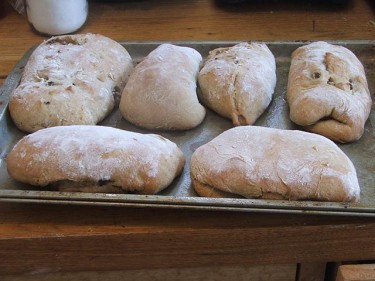
A series about foods we miss and our quests to recreate them.
I grew up in western Nebraska, not a part of the country known as a culinary paradise. While there were plenty of perfectly fine meals growing up, many others just involved beef put on a grill or recipes from the side of a box, like homemade Bisquick pizzas staight from Betty Crocker. I also remember a type of taco salad, popular at potlucks, which was made up of iceberg lettuce strips, fake cheese, browned meat, some salsa and sour cream, and a large smattering of crunched-up Doritos. (When I tried the Doritos “Locos” Taco from Taco Bell when it arrived in May, I was struck by its similarity to these salads; my new theory is that the Taco Bell division of Yum! Brands is hiring homesick Midwest and Great Plains stoners to come up with new product ideas.)
So it’s not often that I succumb to nostalgia for the food I ate as a kid. But there is a particular fast-food place (mostly) endemic to Nebraska whose food I still get terrible cravings for, called Runza, and while no one I’ve ever met outside its footprint has ever heard of it, it’s one of the most successful state franchises (75 locations in 36 Nebraska towns and six more in Iowa, Kansas and Colorado). The name is derived from the runza, a sandwich-type food that also goes by the names bierock, beerock, the Kraut Pirok and, the best, fleischkuche. As you might surmise from that smattering, the dish arrived here from Eastern Europe by way of Germany. It’s so popular in Nebraska that it’s the Runza chain’s signature dish.
But unlike the nominally German peasant fare served up at my family reunions (sausage stretched with oatmeal and a few bland spices known as “knip,” a casserole with sauerkraut, beef, beans and some other salvage ingredients called Shipwreck, but colliquially referred to as “shitwreck,” etc.), freshly baked bierock is a sight to behold: A doughy pastry shell, stuffed with ground beef, cabbage and onion. It’s beautiful in its simplicity and delicious in its execution. The rectangular sandwich-ish contraption might call to mind a stromboli or an attempt at a homemade Hot Pocket. As Runza’s radio commercials used to say, “Food just like grandma used to make,” which is true, if your grandmother was a German peasant who once lived in Russia under Catherine the Great.
Germans account for 42% of Nebraska’s population (fourth in the nation by percentage), and a goodly portion of these Germans are the group known as the Volga Germans, otherwise known as the “Germans from Russia,” an ethnic group with its own museum in Lincoln. Though my family genealogy isn’t deeply known, my last name, Wenz, comes up a few times in Volga German history, mostly as early settlers who became farmers.
The first Runza restaurant was opened by siblings Sally Everett and Alex Brening in 1949. In my hometown of North Platte, there were at least two Runzas. It was a cheap place to drive through for my parents; my cafeteria-less Catholic grade school did hot lunches on Thursdays, and about once a month it was Runza. Though a homemade one wasn’t overly frequent coming from my parents, occasionally my older sister would whip up a batch. They were good, but true to Nebraska style, the dough was often from a famous baker named Pillsbury Doughboy. At the restaurant, you can order your sandwich along with some “frings,” which sounds like a wild combination of a fry and an onion ring, but is actually just the two dumped together in a fry box. The sandwich is delicious and unique and a must-visit when I’m back in Nebraska. (I went to Runza twice the last time I was back home.)
Now I live in Philadelphia, and if you Google “bierock” and “philadelphia” you get, “Did you mean: pierogi philadelphia, which I most certainly did not. True, the dishes bear some similarities, and the bierock itself is remarkably like the Russian pirozhki. However, while the pierogis available in Philly can be stuffed with meat and cabbage (to name but a few ingredient varieties), their shells are more pasta-like, wrapped more as a dumpling than as a sandwich — delicious, but from neighboring Poland and certainly not a bierock. While some parts of Philly have a high concentration of Germans — for instance, the Germantown neighborhood (of course) in Northwest and some pockets in the Northeast — they seem to largely come from the Pennsylvania Dutch communities and traditions, rather than the Prussian Russians populating Nebraska and the Great Plains.
So while many foods are at my disposal in Philadelphia — Italian and Vietnamese in South Philly, Ethiopian in West Philly, Polish in the Port Richmond neighborhood of Northeast Philly — I recently decided that if what I wanted was a particularly weirdly primitive sandwich called the Bierock my best bet was to make it myself.
For the dough, I wanted something less Pillsbury and closer to the restaurant version I grew up on, which was thick enough to support being stuffed with beef, cabbage and onion. I pulled the dough recipe straight from a vegan Runza recipe found on the Post Punk Kitchen site of Isa Chandra Moskowitz, who in addition to being a vegan cookbook author is also a Nebraska transplant. Hers was the easiest recipe for me to adapt, as “vegan” translates pretty easily into “ingredients for the lactose intolerant,” which I am. With my modifications marked, here’s what she lists:
For the dough:
4 1/2 cups all purpose flour, divided
1/2 cup sugar
2 (.25 ounce) packages active dry yeast
1 teaspoon salt
1/2 cup non-hydrogenated shortening (I used olive oil, and not near these amounts — but enough to make the dough not as sticky to the touch)
1/2 cup unsweetened almond milk, at room temperature (or your favorite non-dairy milk)
1/2 cup water, room temperature
1/2 cup unsweetened plain soy yogurt, at room temperature (I used goat yogurt because I had it on hand)
For the stuffing:
I made two batches, one seitan and one beef. Whichever you choose, it should be about:
3 cups finely chopped cabbage (or use sauerkraut if you’re into that)
1 lb. meat or “meat”
1 onion
Salt and pepper to taste
1. Combine two packets of yeast with a half cup of sugar (though I found this to be a bit much sugar, giving the dough a bit too sweet a taste, so you might want to shoot for a quarter cup instead, or a quarter and a half.)
2. Proof the yeast in a half cup of warm / hot water (I just use the hot side of the tap) and a half cup of room temperature soy milk. (Or real milk, if your body produces that magic lactose enzyme.) Stir until dissolved and then wait for it to foam a bit.
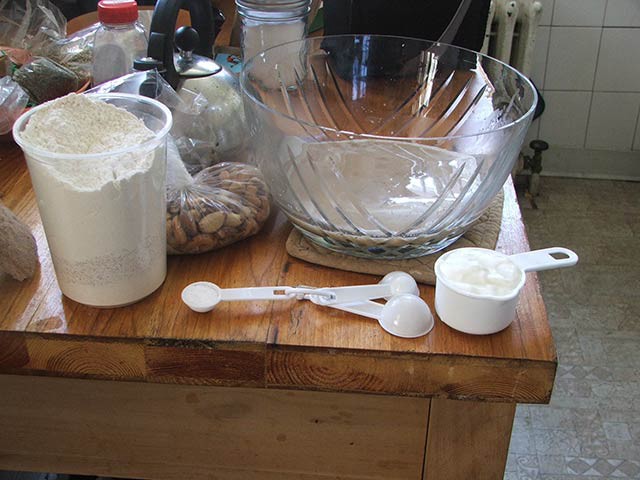
Add in 4 and a half cups of flour (I did one cup pastry flour / 3.5 cups all purpose), 1 teaspoon of salt (though two won’t hurt) and a half cup of yogurt (use soy if you’re vegan or lactose intolerant, regular if you’re not. I used goat here).
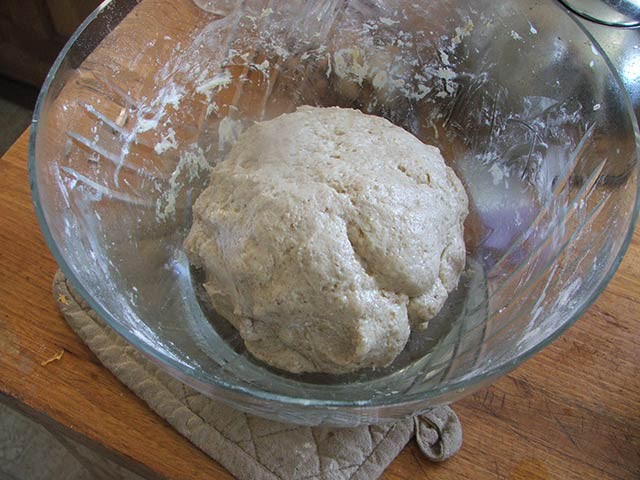
Add in oil or shortening (Moskowitz’s recipe called for a half cup which, no, gross, so I probably hewed closer to a quarter cup olive oil, maybe a bit less.) Gently knead until you make a ball of dough with no visible flour. Cover bowl with a towel, let rise for an hour or until it doubles in size.
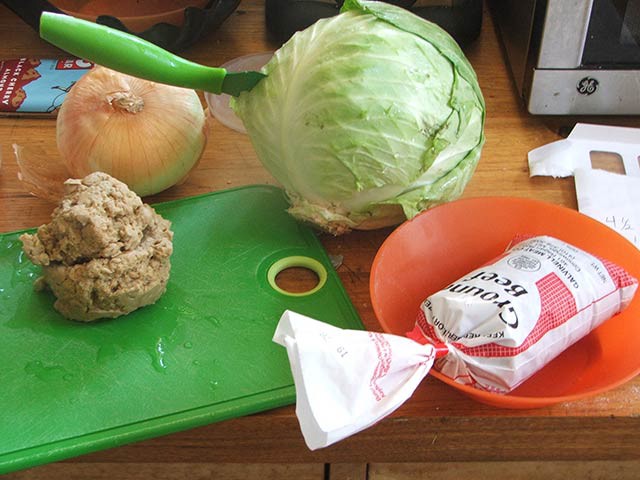
At about 40–45 minutes into said hour, chop up one onion, three cups of cabbage and one pound of ground beef or seitan (as you can see, I’m doing both here.) If you want, you can preheat the oven to 350 degrees now. I mean, you’re gonna have to do it sometime anyway, might as well be now.
Saute up that cabbage and onion in a bit of oil, add salt and pepper to taste.
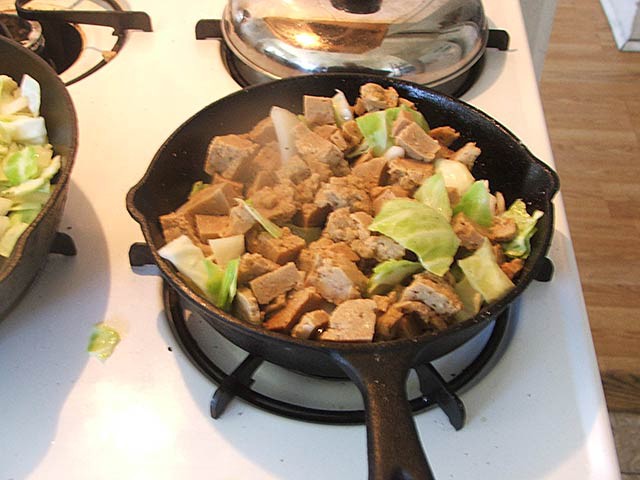
Add in the seitan or the ground beef. Brown the beef. Let the seitan sit there or whatever.
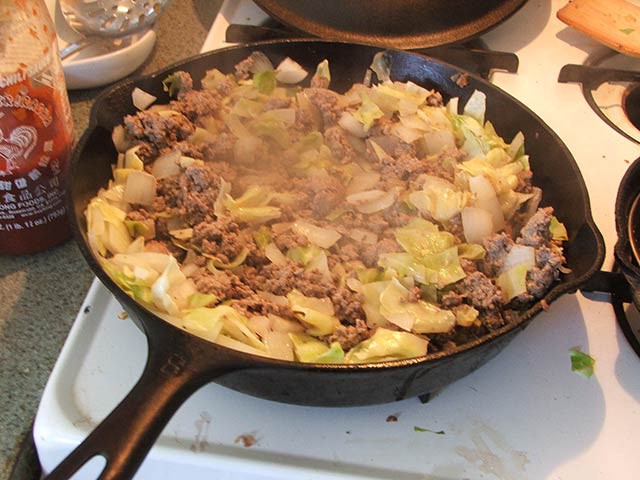
See that browned beef? Yeah, you’re gonna wanna drain it a little. I very unscientifically did it with a turkey baster.
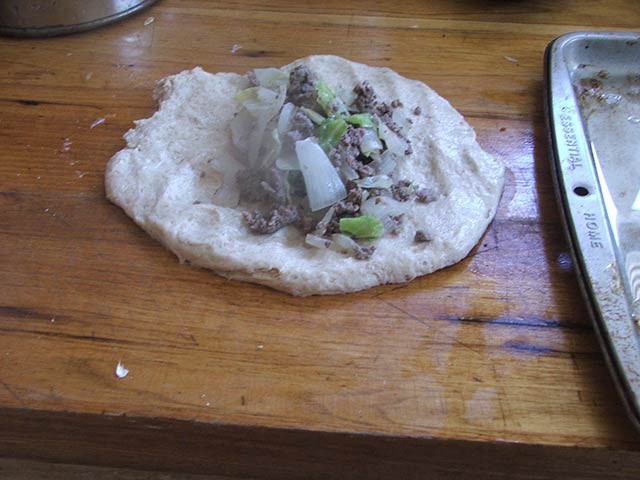
Flour down your assembly surface, add in a half cup of filling to each approximately six inch deal of dough. Tuck in the sides first then roll up the ends.
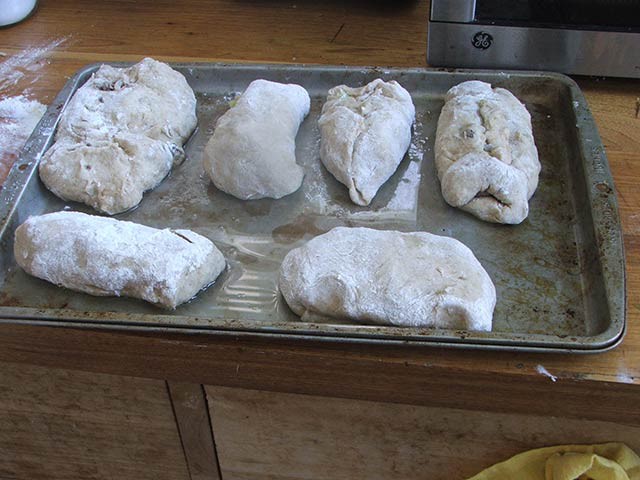
Place stuffed pockets of meaty goodness on a well-greased cookie sheet. Flouring your dough will also help in the not-sticking-to-the-stupid-pan equation.
At about 20–25 minutes in, check the bierocks. Take them out of the oven when they’re golden brown.

Ultimately, my hopes for the perfect Runza were… not quite where I wanted them to be. And the problem wasn’t the replacement of the meat with seitan or the lactose-free ingredients, either. It had more to do with the need for more salt and spices into the filling — I’ll increase the amounts of both next time. The dough, too, due to the amount of sugar and the addition of soy milk, was a bit sweet for my tastes. But the texture of the dough was just right, so with a little work and a little less sugar and a little more salt, I still have hope of resurrecting my bierock dreams even though I’m far from the nearest Runza drive-through.
John Wenz is a Runzaniac.
